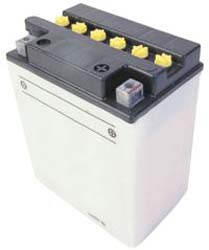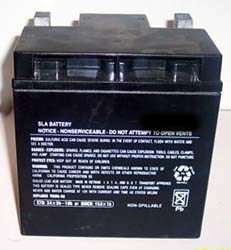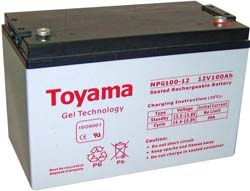One of the most common questions that arises on the MMMotors forum is “what battery should I use in my project?”
Obviously the answer will depend on what engine you have, what extra equipment you have, how often you plan to use your vehicle etc, etc. So I’ll try to provide a little insight into batteries and hopefully this will help in finding the right battery for you, whether you’re building a trike, chop or hotrod.
Firstly I’m going to start by saying that your battery will only be as good as your charging circuit. Self explanatory really -you can’t keep taking power out, without putting some back in!
Battery types
Basically there are two types of lead acid batteries, (and 3 sub categories).
The two main types are Starting, (cranking), and Deep Cycle, (marine/golf cart). The Starting battery is designed to deliver quick bursts of energy, such as starting engines. The Deep Cycle battery has less instant energy, but greater long-term energy delivery and is designed for powering units that will remain switched on for a long time, such as camping/caravanning equipment.
The sub categories are: Wet Cell, Gel Cell and Absorbed Glass Mat, (AGM).
The Wet Cell comes in two types: Serviceable and Maintenance free. Both are filled with electrolyte and are basically the same. Personally, I prefer Serviceable ones as I can add water and check the specific gravity of the electrolyte with a hydrometer.
The Gel Cell and the AGMs are specialist batteries that typically cost twice as much as a premium Wet Cell. However, they store very well and tend not to sulfate or degrade as easily as Wet Cell. There’s little chance of a hydrogen gas explosion or corrosion when using these batteries; these are the safest lead acid batteries you can use.
Gel Cell and some AGM batteries may require a special charging rate and specific battery chargers are made for these types. If you don't use or operate your equipment daily, AGM batteries will hold their charge better than other types. If you must depend on top-notch battery performance, spend the extra money. Gel Cell batteries are still being sold, but AGM batteries are replacing them in most applications.
There’s always some confusion about AGM batteries as different manufacturers call them by different names; some of the more common names are “Sealed Regulated Valve”, “Dry Cell”, “Non Spillable” and “Valve Regulated Lead Acid" batteries. In most cases AGM batteries will give greater life span and greater cycle life than a Wet Cell battery.
It’s very common to use the term Gel Cell when referring to sealed, maintenance free batteries, but not all sealed and maintenance free batteries are actually Gel Cell.
CCA, CA, AH and RC -what does all this mean?
These are the standards that most battery companies use to rate the output and capacity of a battery.
Cold Cranking Amps, (CCA), is a measurement of the number of amps a battery can deliver at 0 ° F for 30 seconds and not drop below 10.5 volts, (a 12 volt battery is deemed to be flat below this). So a high CCA battery rating is especially important in starting battery applications and in cold weather. This measurement is not particularly important in Deep Cycle batteries, though it’s the most commonly used battery measurement.
CA is Cranking Amps measured at 32 degrees F. This rating is also called Marine Cranking Amps, (MCA). Hot Cranking Amps, (HCA), is seldom used now, but is measured at 80 ° F.
RC is Reserve Capacity. This is the number of minutes a fully charged battery at 80 ° F will discharge 25 amps until the battery drops below 10.5 volts.
AH is the Amp Hour rating. If a battery is rated at 100 Amp Hours it should deliver 100 amps for 1 hour, 5 amps for 20 hours, 20 amps for 5 hours, etc.
So, what are we looking for in a battery?
Well, the first thing we have to think about is where our battery is going to go, so physical size is important, because the bigger the battery the more power it can store and deliver. Batteries are typically measured in Length, Height and Width.
Battery measurements should always be given with the battery terminals closest to and facing you. This translates the length into left/right measurement and the width into front/ back. Height should be self explanatory.
Secondly, we need to get our chosen engines started, so CCA is more important than Amp Hours because it’s the CCA that gets the engine turning over. There’s some very complex calculations to work out the required CCA. You need the engine cubic inch displacement and the number of cylinders.
As an example, for the Reliant engines that a lot of us run in our trikes, the early 750cc 4 cylinder engines have a CCA of 92, while the 850cc 4 cylinder engines require a CCA of 104.
The CCA is the minimum required to turn those engines over for enough time for them to start, assuming they’re in reasonable condition. Higher CCAs will give a longer cranking time.
So we would need a battery capable of not only fitting our chosen space, but also with enough Cold Cranking Amps to turn our engine over.
Finally we should consider the Amp Hour, (AH), rating.
Because we’re not enclosed in a metal box with the stereo, heater, wipers, rear demister, heated seats, air con, dvd player etc etc on, we don’t really need a huge amount of Amp Hours, but the higher the AH rating the less work the charging circuit will need to do.
I guess when it comes down to it, you need the biggest battery with the highest CCA and AH that you can physically fit in the space you’ve made for it!
-Tbone
| Battery | Alternative Battery No | Voltage (V) | Capactiy 10HR(Ah) | L (mm) | W (mm) | H (mm) | Approx Weight (KG-not inc acid) | Approx Battery Acid | Charge Current(A) | Terminal Location | CCA (cold cranking amps) |
| (L) | -18oC | ||||||||||
| YB2.5L-C/A | CB2.5L-C | 12 | 2.5 | 81 | 71 | 105 | 0.71 | 0.192 | 0.25 | 25 | |
| YB3L-A | CB3L-A | 12 | 3 | 98 | 57 | 111 | 0.94 | 0.204 | 0.3 | 32 | |
| YB3L-B | CB3L-B | 12 | 3 | 98 | 57 | 111 | 1 | 0.204 | 0.3 | 32 | |
| YB4L-A | CB4L-A | 12 | 4 | 120 | 70 | 92 | 1.33 | 0.294 | 0.4 | 50 | |
| YB4L-B | CB4L-B | 12 | 4 | 120 | 70 | 92 | 1.33 | 0.294 | 0.4 | 50 | |
| YB5L-B | CB5L-B | 12 | 5 | 120 | 61 | 130 | 1.53 | 0.39 | 0.5 | 55 | |
| YB7-A (aka 12N7-4A) | CB7-A | 12 | 8 | 135 | 75 | 133 | 2.3 | 0.636 | 0.8 | 90 | |
| YB7C-A (aka YB7CZ-3B) | CB7C-A | 12 | 8 | 130 | 90 | 116 | 2.2 | 0.504 | 0.8 | 80 | |
| YB9-B | CB9-B | 12 | 9 | 135 | 75 | 139 | 2.34 | 0.636 | 0.9 | 130 | |
| YB9L-A2 | CB9L-A2 | 12 | 9 | 135 | 75 | 139 | 2.34 | 0.636 | 0.9 | 130 | |
| YB9L-B (aka 12N9-3B) | CB9L-B | 12 | 9 | 137 | 76 | 139 | 2.34 | 0.636 | 0.9 | 130 | |
| YB10L-A2 | CB10L-A2 | 12 | 11 | 135 | 90 | 145 | 3 | 0.78 | 1.1 | 160 | |
| YB10L-B2 | CB10L-B2 | 12 | 11 | 136 | 90 | 146 | 3 | 0.78 | 1.1 | 160 | |
| YB12A-A | CB12A-A | 12 | 12 | 134 | 80 | 160 | 2.87 | 0.81 | 1.2 | 165 | |
| YB12AL-A2 | CB12AL-A2 | 12 | 12 | 135 | 81 | 162 | 2.87 | 0.81 | 1.2 | 165 | |
| YB12A-B | CB12A-B | 12 | 12 | 135 | 81 | 162 | 2.87 | 0.81 | 1.2 | 165 | |
| YB14-A2 | CB14-A2 | 12 | 14 | 134 | 89 | 166 | 3.5 | 0.84 | 1.4 | 190 | |
| YB14A-A2 | CB14A-A2 | 12 | 14 | 134 | 89 | 178.5 | 3.5 | 0.84 | 1.4 | 190 | |
| YB14-B2 | CB14-B2 | 12 | 14 | 134 | 89 | 166 | 3.5 | 0.84 | 1.4 | 190 | |
| YB14L-A2 | CB14L-A2 | 12 | 14 | 134 | 89 | 166 | 3.5 | 0.84 | 1.4 | 190 | |
| YB14L-B2 | CB14L-B2 | 12 | 14 | 134 | 89 | 166 | 3.5 | 0.84 | 1.4 | 190 | |
| YB16AL-A2 | CB16AL-A2 | 12 | 16 | 205 | 70 | 162 | 4.1 | 1.08 | 1.6 | 175 | |
| YB16B-A | CB16B-A | 12 | 16 | 150 | 90 | 181 | 3.62 | 1.02 | 1.6 | 175 | |
| YB16-B | CB16-B | 12 | 19 | 175 | 100 | 155 | 4.95 | 1.23 | 1.9 | 240 | |
| YB18L-A2 | CB18L-A2 | 12 | 18 | 181 | 90.5 | 164 | 4.65 | 1.2 | 1.8 | 235 | |
| Y50-N18L-A2 | C50-N18L-A2 | 12 | 20 | 205 | 90 | 162 | 4.7 | 1.47 | 2 | 260 | |
| Y50-N18L-A3 | C50-N18L-A3 | 12 | 20 | 205 | 90 | 162 | 4.7 | 1.47 | 2 | 260 |



Wet Cell